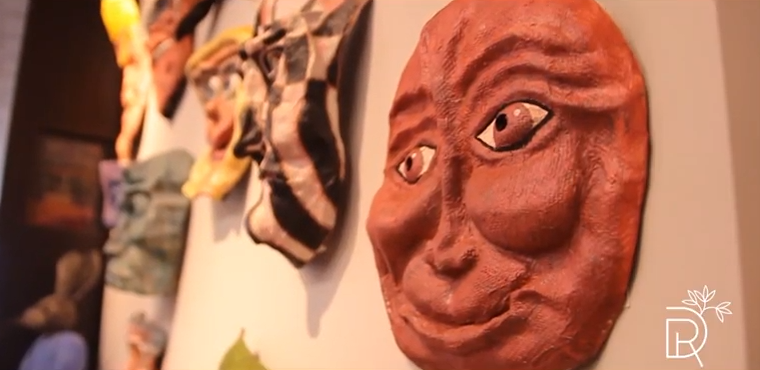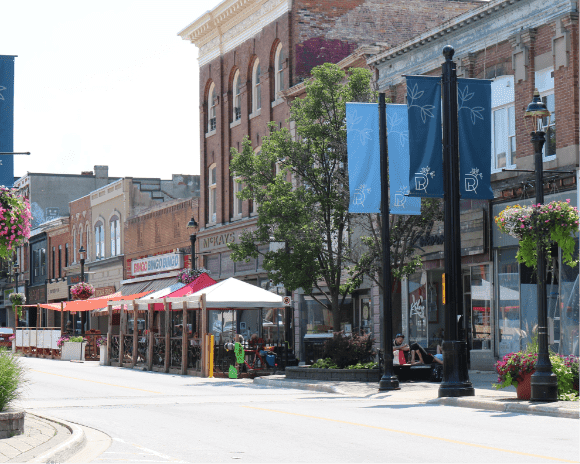

The CMHA Grey Bruce Community Gardens was first established in 2010 and is now known as Fresh Roots Food Forest and Community Gardens. In Owen Sound the gardens consist of three separate sites within the City’s core. The largest is comprised of 112 raised garden beds on land leased from the City of Owen Sound. Additional sites along the harbour front and on 9th St. East are made possible with partnerships with the City of Owen Sound and the United Way of Bruce Grey. CMHA Grey Bruce acknowledges the barriers to employment faced by many living with mental illness and sets out to create inclusive spaces while creating employment opportunities through the Fresh Roots Food Forest and Community Gardens initiative. Our goal is to directly impact the wellbeing of those involved by reducing social isolation, increasing employment, building skills and having fun through gardening.
In 2024, members of the Fresh Roots Food Forest and Community Gardens group planted the following along the East harbour wall:
Chives (Allium schoenoprasum)
Are a commonly used herb and can be found in grocery stores or grown in home gardens. In culinary use, the green stalks (scapes) and the unopened, immature flower buds are diced and used as an ingredient for omelettes, fish, potatoes, soups, and many other dishes. The edible flowers can be used in salads. Chives have insect-repelling properties that can be used in gardens to control pests. The plant provides a great deal of nectar for pollinators. It was rated in the top 10 for most nectar production (nectar per unit cover per year) in a UK plants survey.
Kale (Brassica oleracea, variety acephala)
Derived from the cabbage of the mustard family (Brassicaceae). Kale is grown mainly for autumn and winter harvest, as cold improves its eating quality and flavour; its hardiness permits harvest of fresh greens after most fresh vegetables have become unavailable. The leaves can be eaten fresh or as a cooked vegetable and are a source of vitamin A, vitamin C, calcium, iron, and vitamin B6. Though usually grown as an annual, kale is a biennial plant and produces yellow four-petaled flowers borne in loose clusters in its second year. Kale flowers are edible. Eat them raw or cook them. Best picked after a frost for sweeter flowers.
Romaine (Lactuca sativa L. var. longifolia)
One of the most widely used varieties of lettuce. It is a versatile vegetable with a crisp flavor that is neither overly bitter nor overly sweet. It is also packed with nutrients and can be served raw or cooked. Although romaine is the most common name in North America, this variety will occasionally be referred to as Cos lettuce. Cos refers to a Greek island located off the southwestern coast of Turkey, where this lettuce variety is said to have originated. Romaine lettuce is one of the oldest cultivated vegetables. Romaine does flower and goes through a process called bolting, when the plants shift from leafy growth into flower production.
Radish (Raphanus sativus)
A flowering plant in the mustard family, Brassicaceae. Its large taproot is commonly used as a root vegetable, although the entire plant is edible and its leaves are sometimes used as a leaf vegetable. They germinate quickly and grow rapidly, common smaller varieties being ready for consumption within a month, while larger daikon varieties take several months. When radishes go to seed they form countless white to pink, cross-shaped flowers. From this point on, the radish is inedible. However, insects, like bees and butterflies still find plenty of food in radish flowers.
Beetroot (Beta vulgaris)
A root vegetable also known as table beet, garden beet, or just beet. Beetroots and beetroot juice have been associated with numerous health benefits, including improved blood flow, lower blood pressure, and increased exercise performance. Beetroots are delicious raw but more frequently cooked or pickled. Their leaves — known as beet greens — can also be eaten. In the plants second season a tall, branched, leafy stem arises to bear clusters of minute green flowers that develop into brown corky fruits.
These vegetables will continue to grow and be harvested throughout the season. You are invited to stroll the East harbour wall and take in this Pollinator Path.



